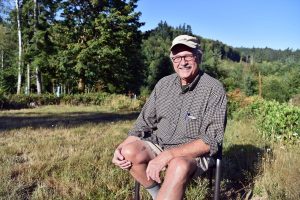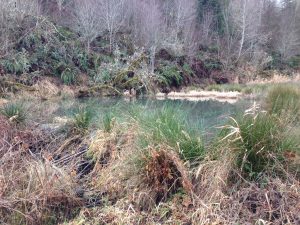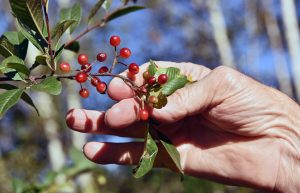www.ChehalisLeadEntity.org
News

Rochester Man Enhances Homesite to Protect Natural Resources
Rochester Man Enhances Homesite to Protect Natural Resources

Rochester resident JB McCrummen worked with foresters in local NRCS offices in Olympia and Puyallup to help him determine how he could enhance wildlife habitat on his property.
“By providing habitat diversity, JB’s property will provide additional habitat not just for salmon species, but a variety of wildlife that utilizes the creek, riparian area, and upland habitat,” Himsl explained.

Beaver pond
Read more here! http://www.thurstontalk.com/2016/08/29/jb-mccrummen-chehalis-basin/
Getting Support for Land Enhancement
By Paul Dunn
Even before he plunked down hard-earned cash on 21 acres of hilly land in rural Rochester, longtime Washington resident JB McCrummen knew he’d have his work cut out for him.
Logged in 1990, the rectangular-shaped site through which Beaver Creek meandered retained a tranquility that called to McCrummen in a way that some 499 other parcels he’d viewed in Washington, Oregon and Idaho had not.
From an outsider’s view, though, the plant life that instilled the land with gorgeous abundance was in fact choking its native natural resources. Thistle and blackberry bushes, for instance, thrived on the land — but they weren’t native species and thus didn’t engender the type of ecosystem McCrummen envisioned.
The then 67-year-old wanted to spend his retirement years living off the land as best he could and in due course providing a haven for wildlife — salmon included — that called his property home. And that meant replacing invasive plants with native species — though at the time he wasn’t sure how to go about it.
So he contacted the National Resource Conservation Service (NRCS), a division of the U.S. Department of Agriculture. As stated on the NRCS website, the agency provides landowners throughout the country with “technical guidance and financial assistance to help them implement proven conservation practices on their land.”
And that’s exactly what McCrummen needed: technical guidance.
In the process he met NRCS forester Joshua Himsl, who works out of the agency’s Puyallup office, and Olympia-based NRCS resource conservationist Jeff Swotek. Together they helped McCrummen improve the overall forest health and wildlife use of his property — and through the agency provided financial assistance to help pay for the enhancements.
“Specific to forestland operation, NRCS typically can provide assistance for pre-commercial thinning of overstocked stand, reforest damaged and under-stocked lands, improve stream crossings and control forest-road erosion,” Himsl said.
To be eligible for financial assistance, landowners are encouraged to develop a Conservation Activity Plan that identifies the property’s potential resource concerns. Once the NRCS approves the plan, landowners may apply to implement their enhancement goals and share the cost with the NRCS.
In McCrummen’s case, the NRCS provided $1,185 for developing a Forest Management Plan and another $2,789 — about one-third of the actual cost — to help him thin overstocked forest stands, plant trees and shrubs along Beaver Creek and create habitat piles and snags to improve wildlife habitat.
Himsl noted that over the past few years the NRCS has provided $200,000 a year to implement forestry-related activities in the Puget Sound area.
“NRCS is an agency committed to ‘helping people help the land,’” Himsl explained. “Specifically in the Puget Sound and western Washington region we focus on overall forestland health, vigor, and productivity

JB McCrummen’s 21 acres of paradise in rural Rochester includes a great variety of native plant species designed to attract the property’s diverse wildlife — among them these native cherries from one of the property’s many cherry trees.